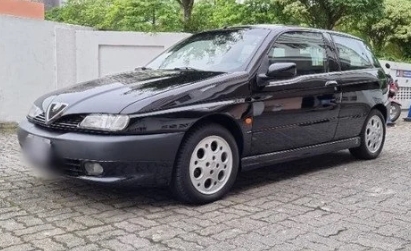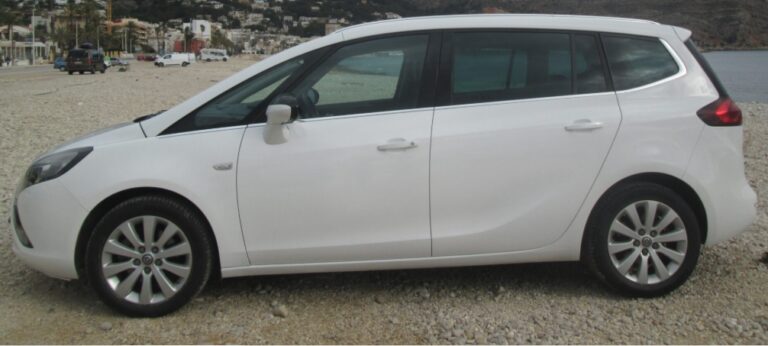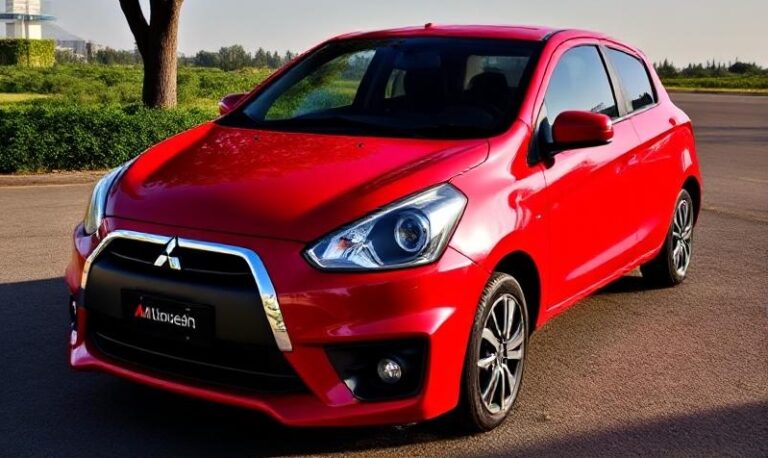The Humble Hustler: Tracing the Evolution of the Toyota Agya
The Toyota Agya, a name that might not evoke the same visceral thrill as a Supra or the rugged dependability of a Land Cruiser, is nevertheless a vital cog in Toyota’s global strategy. This subcompact city car, born from necessity and honed through incremental improvements, represents a commitment to providing affordable, reliable, and surprisingly capable transportation for a vast segment of the world’s population. From its initial conception to its current iteration, the Agya’s journey is a fascinating case study in how a global automotive titan adapts to diverse market needs and embraces technological advancements. So, let’s delve into the evolution of this pragmatic yet persistent hatchback.
Birth of a Bargain: The First Generation (2012-2017)
The story of the Toyota Agya begins in 2012, with its launch primarily targeting emerging markets, particularly in Southeast Asia and India. It wasn’t a product of radical innovation but rather a strategic response to the burgeoning demand for economical, fuel-efficient, and low-cost vehicles. The Agya was essentially a rebadged and slightly re-engineered version of the Daihatsu Ayla, a car developed under the Indonesian Low Cost Green Car (LCGC) program. This partnership allowed Toyota to leverage Daihatsu’s expertise in producing affordable vehicles while benefiting from Toyota’s global brand recognition and distribution network.
The first-generation Agya was designed with simplicity and affordability at its core. Its compact dimensions, short wheelbase, and upright stance were optimized for urban maneuverability and ease of parking – crucial attributes in congested city environments. The exterior design was functional rather than flamboyant, featuring clean lines and a no-nonsense aesthetic. It was a car that prioritized utility over luxury, and its target audience appreciated that straightforward approach.
Under the hood, the first-generation Agya was powered by a modest 1.0-liter, three-cylinder, naturally aspirated petrol engine. This engine was chosen for its excellent fuel economy and low running costs, aligning perfectly with the car’s budget-friendly positioning. Power output was around 65-67 horsepower, sufficient for city driving but not designed for spirited highway overtakes. Transmission options typically included a 5-speed manual and, in some markets, a 4-speed automatic.
.
NO MORE dead batteries with this:

.
The interior reflected the car’s affordable nature. While basic, it was functional and offered a respectable amount of space for its class. Features were generally kept to a minimum to keep costs down. However, Toyota did offer different trim levels to cater to slightly varied needs and budgets.
Model and Trim Levels (First Generation – Approximate)
- Base/Standard: This was the entry-level offering, typically featuring essential amenities like manual windows, basic fabric upholstery, and a simple audio system (often just a radio or single-CD player). Air conditioning was often an optional extra.
- G Trim: This represented a step up, usually including power windows, power steering, a more integrated audio system (sometimes with MP3 and USB compatibility), and potentially a tachometer. Alloy wheels might also have been an option on this trim.
- TRD Sportivo (in some markets): This trim aimed for a sportier appeal, often distinguished by unique body kits, different alloy wheel designs, and interior styling accents. Mechanically, it remained largely the same as other trims.
The first-generation Agya proved successful in its intended markets, establishing itself as a reliable and economical choice for first-time car buyers and those seeking a practical second car. Its unassuming nature allowed it to blend into the everyday fabric of urban life.
A Subtle Evolution: The First Facelift and Minor Updates (Mid-Life)
Like most automotive models, the first-generation Agya received minor updates and facelifts during its production run. These weren’t revolutionary overhauls but rather refinements to keep the car competitive and address customer feedback. These typically included subtle exterior tweaks, such as revised grille designs, updated headlamp and taillamp clusters, and minor interior trim enhancements. Some markets may have also seen the introduction of new color options or slightly updated feature packages. The core mechanicals, however, remained largely the same throughout this period.
The Second Act: The All-New Second Generation (2017-Present)
In 2017, Toyota introduced the second generation of the Agya, marking a more significant leap forward. While still built on the foundation of affordability and efficiency, this new iteration showcased a more modern design, improved interior quality, and enhanced features. The platform itself saw updates, and the design language became more aligned with Toyota’s contemporary styling cues, giving the Agya a more substantial and contemporary presence on the road.
The exterior of the second-generation Agya adopted a sharper, more dynamic look. The front fascia was redesigned with a more prominent grille and sculpted headlights, while the rear received a more stylish bumper and taillight treatment. The dimensions remained compact, but the overall profile appeared more refined and less utilitarian than its predecessor.
Under the hood, the engine options were largely carried over from the first generation, with the 1.0-liter three-cylinder engine remaining the primary choice for its fuel efficiency. However, Toyota tinkered with the engine’s tuning for marginal improvements in performance and emissions. In some markets, a larger 1.2-liter four-cylinder engine, offering a bit more power (around 87 horsepower), became available as an option, catering to those who desired a bit more punch for highway driving. Transmission options continued to include a 5-speed manual and a 4-speed automatic.
The interior of the second-generation Agya saw a more significant upgrade. While still prioritizing functionality, the materials felt more upmarket, and the dashboard design was more contemporary. Features like a touchscreen infotainment system (with Apple CarPlay and Android Auto in some higher trims and later model years), a multi-information display in the instrument cluster, and improved storage solutions became available. Safety features also saw an improvement, with the inclusion of dual front airbags as standard across most trims, and in some regions, anti-lock braking systems (ABS) and electronic brake-force distribution (EBD) became available.
Model and Trim Levels (Second Generation – Approximate, varies by market)
The second generation saw a more defined trim structure, with variations across different regions. However, common themes emerged:
- E/G (Base Trims): These were the entry-level models, offering essential features like power steering, air conditioning, power windows (often front only), and a basic audio system. The focus remained on cost-effectiveness.
- G/V (Mid-Level Trims): These trims offered a better balance of features and value. They typically included power windows all around, a more advanced infotainment system (sometimes with a touchscreen), alloy wheels, and potentially reverse parking sensors.
- TRD Sportivo (in some markets): This trim continued to offer a sportier aesthetic with revised bumpers, side skirts, spoilers, and unique interior trim. It was aimed at buyers looking for a more visually appealing car without compromising on the Agya’s core values.
- GR Sport (in some newer iterations): Following Toyota’s Gazoo Racing branding, some later models of the Agya might feature “GR Sport” badging and styling cues, signifying a sportier appearance package.
Technological Advancements and Refinements
Throughout the second generation, Toyota continued to refine the Agya, introducing technological advancements and updated feature packages. These included:
- Improved Infotainment: Later models of the second-generation Agya saw the integration of more advanced infotainment systems with touchscreen displays, smartphone connectivity (Apple CarPlay and Android Auto), and Bluetooth functionality.
- Enhanced Safety Features: As safety regulations evolved and customer expectations grew, newer Agya models have seen the introduction of features like Electronic Stability Control (ESC) and Hill Start Assist (HSA) in select markets, further bolstering its safety credentials.
- Engine Efficiency and Emissions: While the core engines remained, Toyota has continuously worked on optimizing their efficiency and reducing emissions to meet stricter environmental standards in various regions.
- Keyless Entry and Start: Higher trim levels in later years also began to offer keyless entry and push-button start, adding a touch of modern convenience.
The Agya’s Global Footprint
It’s crucial to understand that the Toyota Agya’s evolution isn’t a monolithic, single-market story. It has been adapted and rebadged for various regions under different names, reflecting local market preferences and competitive landscapes. For instance:
- Daihatsu Ayla: As mentioned, the Agya is closely twinned with the Daihatsu Ayla, often sharing platforms and powertrains, with subtle design differences.
- Perodua Axia: In Malaysia, the Agya is also sold as the Perodua Axia, another member of the Daihatsu-Toyota family, with its own unique styling and feature sets tailored to the Malaysian market.
These different iterations highlight Toyota’s “small car, big market” strategy, allowing them to customize a core platform for diverse needs while maintaining economies of scale.
The Future of the Humble Hustler
The Toyota Agya, in its current second-generation form, continues to be a significant player in the subcompact segment. While it may not lead the pack in raw performance or cutting-edge technology, its strengths lie in its affordability, legendary Toyota reliability, excellent fuel economy, and practical urban usability.
Looking ahead, it’s likely that the Agya will continue its evolutionary path. We can anticipate further refinements in fuel efficiency, potentially with mild-hybrid technology making its way into powertrain options, especially as emission regulations tighten globally. The interior will likely see further integration of digital features, and safety technology will continue to be a key focus. Design-wise, it will undoubtedly continue to align with Toyota’s evolving aesthetic.
The Toyota Agya is more than just a car; it’s a symbol of accessible mobility. It’s the dependable companion for students, young families, and budget-conscious individuals who need a reliable means of getting from point A to point B. Its evolution, marked by incremental improvements and a keen understanding of its target markets, showcases Toyota’s enduring commitment to serving a broad spectrum of global consumers. The humble hustler may not grab headlines, but its quiet evolution ensures it will continue to play a vital role in the automotive landscape for years to come.







